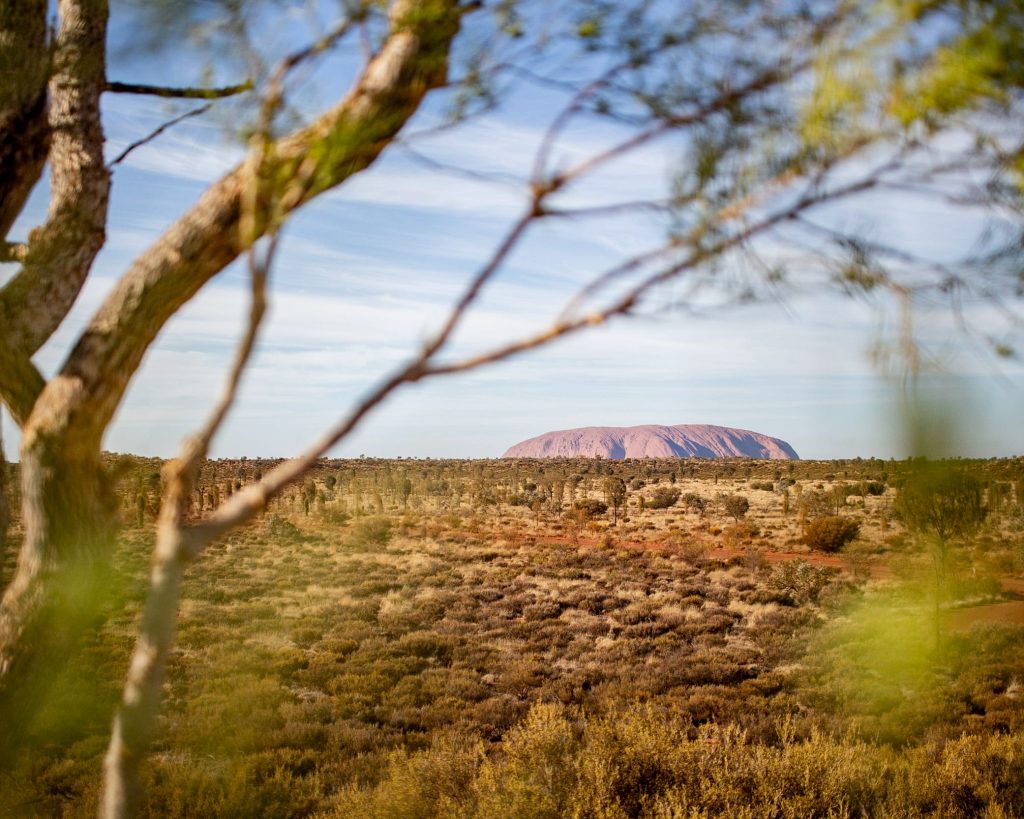
Visiting Uluru is a must. For Aussies, for travellers, for everyone. It's a right of passage - have you really been to Australia if you haven't been to Uluru?
In this article:
Flying from Sydney, getting to Uluru was a mere 3.5 hours. 3 hours from Melbourne, or 2 hours from Adelaide. Not too bad. You can fly with Jetstar or Virgin Australia into Connellan Airport, the name of the local airport and it's a quick 10 min shuttle ride to the resort from there.
You can also drive from Alice Springs, Darwin or Adelaide and experience more of the landscape that makes this area truly unique. Who doesn't love a good roadtrip?
The mistake that most tourists make in visiting Uluru is that they go during Australian summer.
I understand that this is high travel season for a lot of people, but unless you can handle up to 55C days and a million flies trying to get into every open hole in your face, your best bet is to go during winter. The weather is less humid and cooler (about low to mid 20s during the day and around 10 during the night).
We went at the end of Autumn and it was still hitting 30C when the sun was up. Something to keep in mind considering that once you're out at the rock, there is not a lot of shade to keep you cool.
I've also heard people mention that a day or two is enough to see the area. I highly disagree. We did 4 days and it was just enough time to see everything major there is to see but we also could have done more.
The only place to really stay close to Uluru-Kata Tjuta National Park is Yulara, which is entirely comprised of Ayers Rock Resort. All hotels, restaurants and amenities are owned by them. It's its own little town with police station, supermarket, petrol station and more.
There's something to suit everyone though, with a campground, backpackers, family hotel, boutique hotel and more high end luxury hotels. We stayed in Desert Gardens Hotel in a Rock View Room, a lovely hotel with the best view of Uluru from the resort. It included a large king size bed, TV, fridge, bath and balcony overlooking the rock. Perfect for a weekend away.
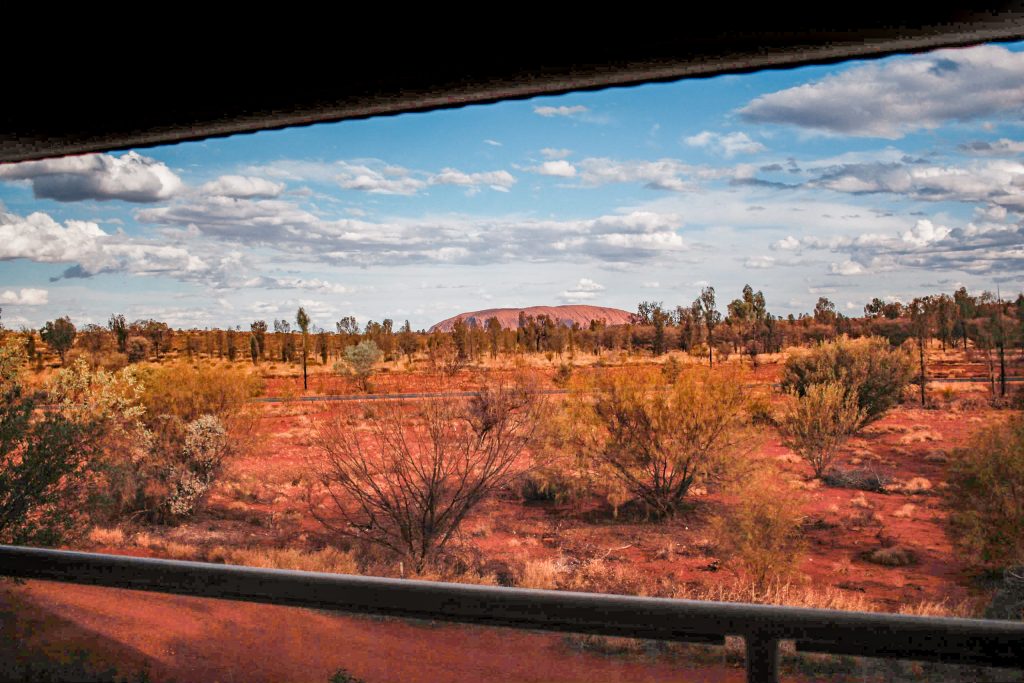
The one good thing about everything being owned by the same resort, is that no matter what you want to do, you can book it all though your own hotel's concierge. We booked our bicycle hire, restaurant dining, bus transfers and more. The staff were super helpful and very friendly. If you don't know what you want to do while there, they can help with that too.
As for food, we ate at several places around the resort. My favourite was either the Pioneer BBQ, a cheaper and more family friendly option, where you choose and cook your own meat - they even have crocodile and kangaroo on offer! - or the Arnguli Restaurant.
We treated ourselves to a meal here and were not disappointed. It was our anniversary and my birthday so we thought, why not? There are several high end restaurants but went with this one for convenience as it is also in the Desert Gardens section of the Resort. Great, indigenous inspired food really put you in the right mindset for the experience!
There are a couple of options when considering how to get around the area. We opted for the Uluru Hop On Hop Off bus, and tours that would take us out and show us around. But there is also the option of hiring your own car, picking it up from either the airport or the hotel, and driving yourself around.
While we liked the bus and couldn't really fault the tours at all as we learnt so much from our guides as well as getting food supplied, we decided that hiring a car would have been better, timing wise.
The bus has four or five transfers to Uluru and Kata Tjuta per day and if you miss it, you will need to wait about an hour for the next. There are specific sunrise and sunset bus times (around 6am and 7pm respectively during winter), so don't worry about that.
But having a car is just an extra level of freedom to explore and visit locations further away from Uluru that the bus doesn't take you.
Whether you choose a car or bus, you will need a National Park Pass. They check this either when you enter the National Park (there is a boom gate and operators), or when you start your tour. This gives you entry to see Uluru, Kata Tjuta and the surrounding park area, and will cost $50 pp for 3 days.
The national park opens at 6am and closes at 7.30pm during May, when we went. Sunrise was about 7am and sunset 6pm, so this gives you plenty of time to enjoy the show and then head back home. Just note that once the sun has dipped below the horizon stay another 15 minutes or so as the colours of the desert around you intensify.
Check opening times and book your pass at the National Parks website.
There are specific tours that go out for sunrise and sunset and take you to the specific viewing platforms around the two formations that are built for that purpose. These are really popular though, so just be mindful.
There are also lookouts in and around the resort that give you uninterrupted views of Uluru and Kata Tjuta.
We found the best lookout was either the Imalung lookout, located right in the centre of the resort looking out over Uluru to the front and Kata Tjuta to the side, or a lookout just off Napala Rd, opposite the war memorial (other side to the turn off onto Kunia St).
Just a note on photography at Uluru - while walking or riding around, please note that there are sections of Uluru that are considered sacred to the local aboriginal people and therefore are not allowed to be photographed or filmed. Don't worry, there are lots of other places just as beautiful that can be photographed so you won't be short on photo ops.
Drone use is also restricted within the National Park. But we found some places just outside of the park that we could lift off and fly around, with just as amazing views of Uluru and surrounds.
Funny story - be careful of Eagles in the area. One tried to attack and take our drone on one of the flights! I've never had my heart racing as much as it was in that moment, with me running to the drone and my partner trying to bring it down so I could catch it and the eagle swooping in.
It must have been hilarious to watch from the outside, but damn it was scary at the time. We were careful to watch out for him after that.
When visiting the rock itself, we took 2 days to fully explore around. If you want to do just one, make sure you go early and use the day to your full advantage.
We went the first day in the afternoon, just to explore the Walpa Gorge section. We were there for less than two hours and really enjoyed the relaxed, short walk and reading the plaques explaining the history and culture along the way.
The second day, we went around 10am to pick up our bikes. It took us around 4 hours to ride around the full base. So for walking, I would add a couple of hours onto that. I recommend biking as it's less stress on your body and easier to explore. Either way, just remember to stay hydrated!
In total, the base clocks in at just under 10km. But with each corner revealing more amazing photo opportunities, you'll be stopping every 5 minutes to marvel at it all.
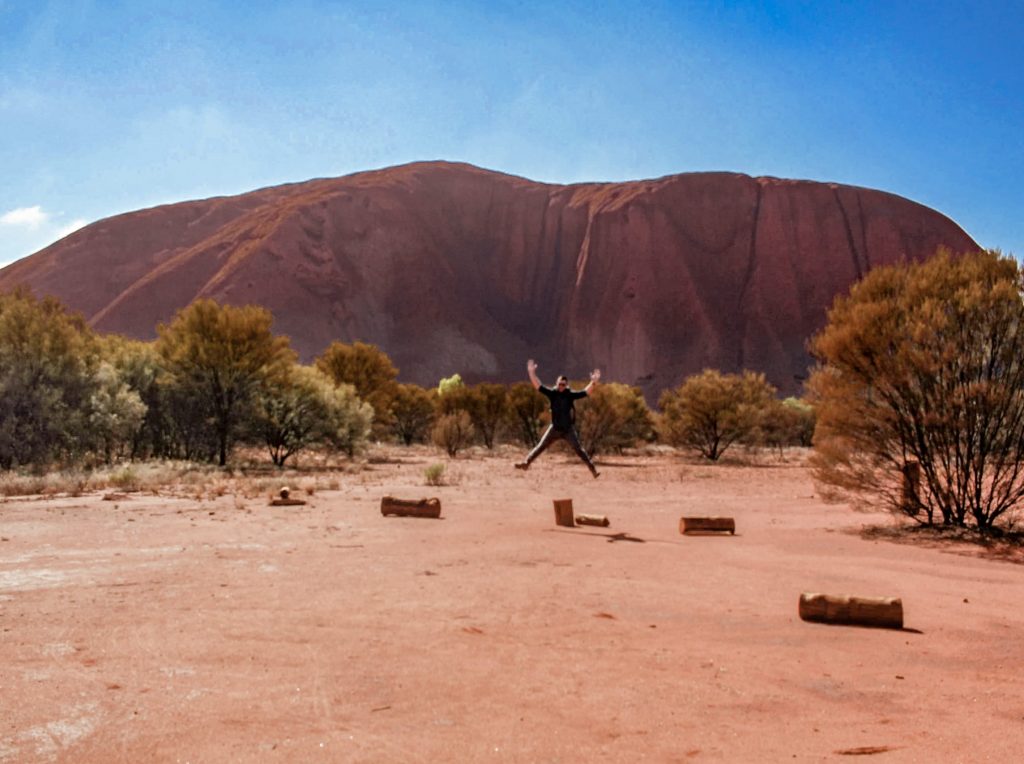
But be prepared. There is barely any shade in some sections, so take with you:
If you are short on time, the highlights of Uluru include Walpa Gorge and Mutitjulu Waterhole. The bus can drop you at the start of these tracks or they have carparks, if you're driving. They are short, easy walks and have trees for shade so they are suitable for all walking types.
You might also want to add some time in to explore the cultural centre, located 2km from Walpa carpark. You can find refreshments, food and a beautiful art gallery. Talk to the people behind the counter and discover a whole new side to the culture of the area. You can also catch the bus back to the resort from here, so we made this our last stop of the day.
One thing about Uluru - please don't climb it. You are technically allowed to, but there are signs everywhere posted by the National Park and the local aboriginal people asking you not to. It is considered disrespectful and it is actually hurting the rock. You can see the white scar that has been created by years of tourists walking and trampling the rock.
The climb will be closed from October 2019, but until then it is up to you whether you make the attempt or not.
Other than Uluru itself, there is so much to the red centre that you need to explore and discover.
We did one tour in our weekend there, a sunrise tour to see Kata Tjuta and the Valley of the Winds. I would absolutely recommend this tour, hosted by AAT Kings. You can book this through the resort.
We started about 5.30am, catching a coach into the National Park and to the sunrise lookout platform where we were provided breakfast and a hot cuppa. It was a bit chilly before the sun was up, so bring a light jumper (as soon as the sun is up, you won't need it anymore!).
It was so peaceful and magical watching the sunrise. We had Kata Tjuta (The Olgas) in front of us, and Uluru to the side (the sun rose behind Uluru from this angle).
After sunrise finished, we were taken deep into the heart of Kata Tjuta to hike through the formation. The first part of the hike was easy, where everyone was invited to join in. The lookout we came to was beautiful, with Mount Olga right in front of us.
After the first lookout, however, they recommended only fit walkers continue on and I could see why. The section from the first lookout to the Valley of the Winds itself was rocky, steep in places and even a bit of bouldering was involved. It was so worth it though. The Valley of the Winds was one of my favourite views on the entire trip. My breath was taken away, in more ways than one.
You can also do trips to Kings Canyon, which takes a few hours to get there and therefore will take up a whole day. They also do overnight tours there. We didn't have quite enough time to enjoy this one, but will be looking into it for our return.
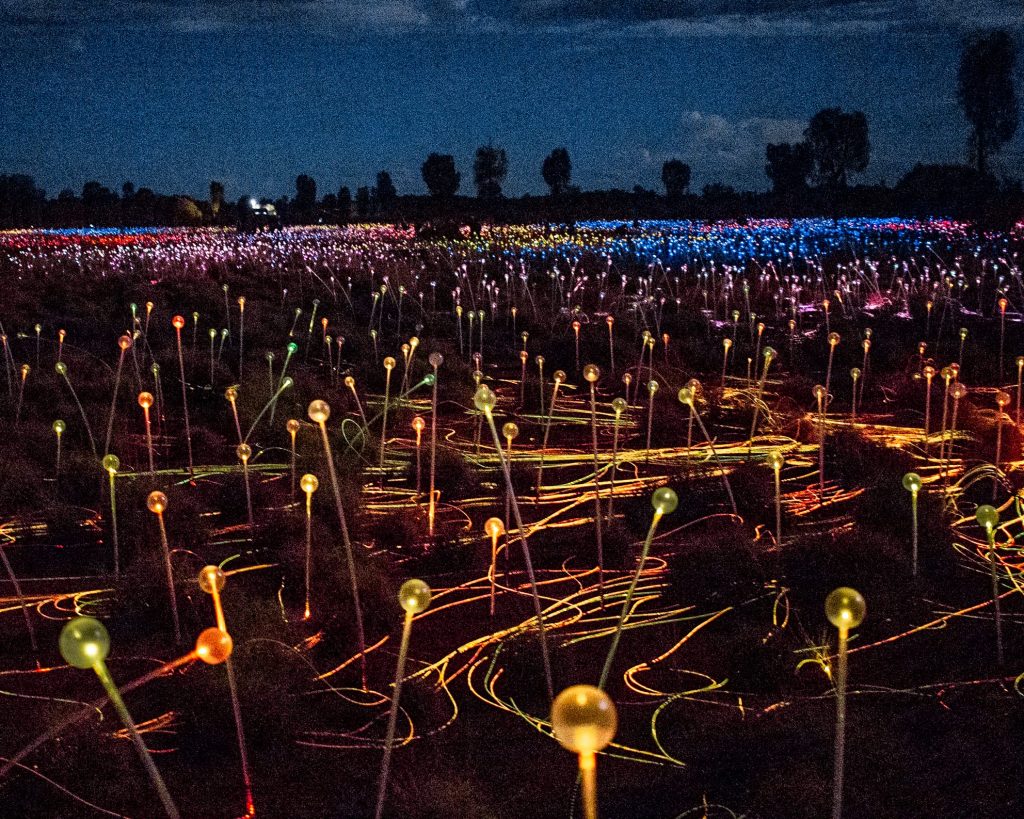
One of my highlights was the Night at Field of Light. This tour is run by the resort and includes an outback dinner (called Sounds of Silence), didgeridoo performance, star talk after nightfall, and entrance into the resident outdoor art installation, Field of Light by Bruce Munro.
It was pushing our budget, but we both knew we had to experience this. And every second was worth it.
They pick you up from your hotel before sunset, drive you to a lookout just outside of the resort boundaries, where you can have a glass of champagne while watching the sunset behind Kata Tjuta in the distance and the light playing off Uluru on the other side. It is truly breathtaking. The way the rock changes colours as the sun sets is awe inspiring.
After the sun dips below the horizon, they take you down the track a little to where they have set up the buffet style dinner and tables. You walk in to the sounds of the didgeridoo and Uluru in the background.
The food was great, with lots of variety and cooked fresh. You also have the choice of more bottomless drinks, so that was appreciated.
After dinner, they give a short talk about the stars from a resident expert. At this point it is completely pitch black and they turn off the lights so that the whole sky is lit up with thousands of stars. You definitely don't get that living in the city.
They then let you wander around the Field of Light, which I have no words to describe. It is magical, just truly magical. Take your time to really appreciate the art and pay attention to the detail and the lights changing colour.
Munro says of the installation “I wanted to create an illuminated field of stems that, like the dormant seed in a dry desert, would burst into bloom at dusk with gentle rhythms of light under a blazing blanket of stars”. He succeeds beyond measure.
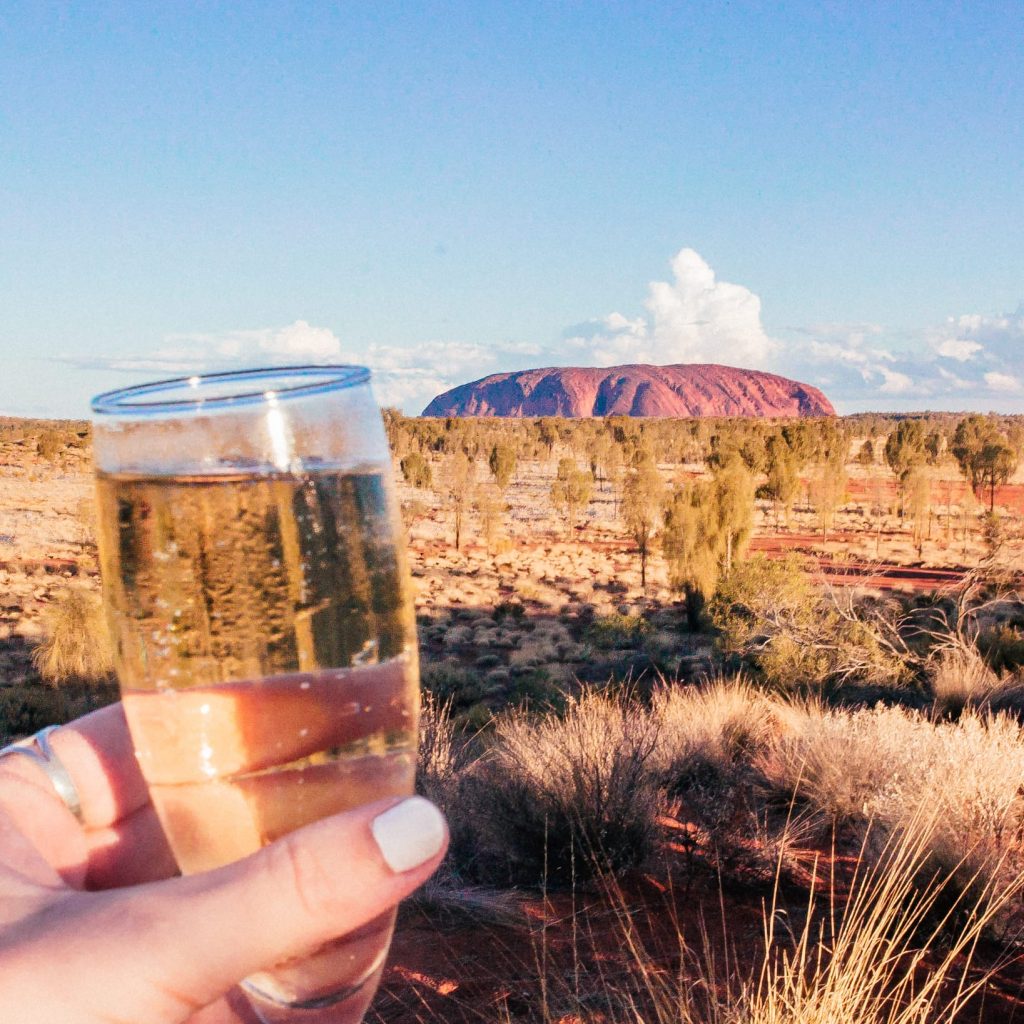
My journey to the red centre, to Uluru and surrounds, was more than I expected. I came back home feeling refreshed spiritually, physically and mentally. I couldn't say this enough - please do yourself a favour and visit and experience this unique, beautiful landscape. There is really nothing like it in the world. You will not regret a single second.
Have you ever been to the Australian Outback? What did you think? Where do you recommend I should go next?
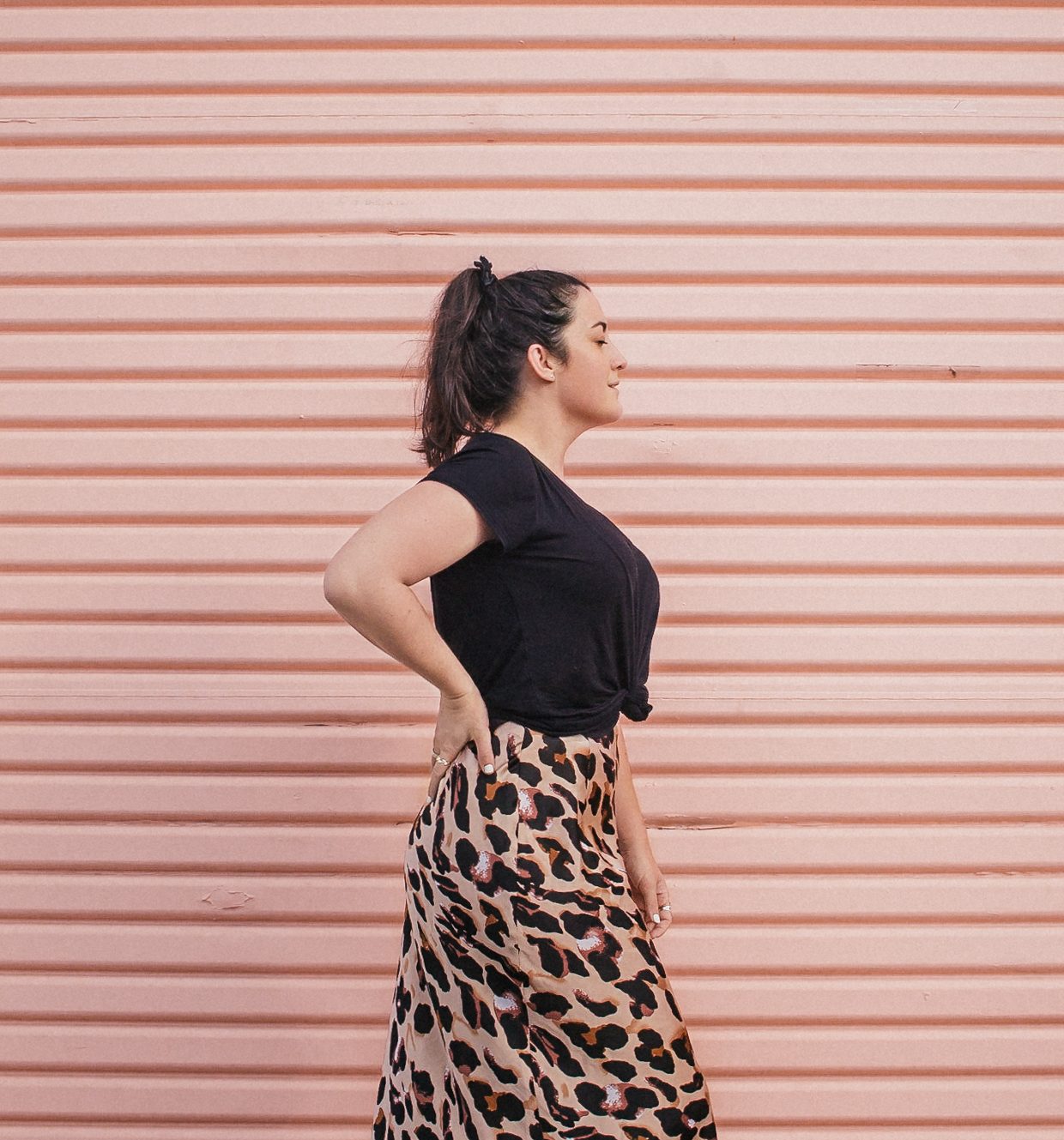
[…] See more guides for New Zealand, New York City and Uluru. […]